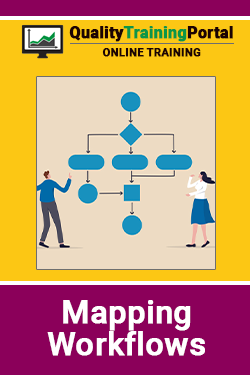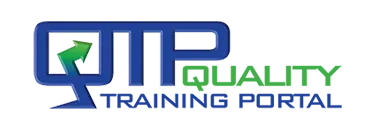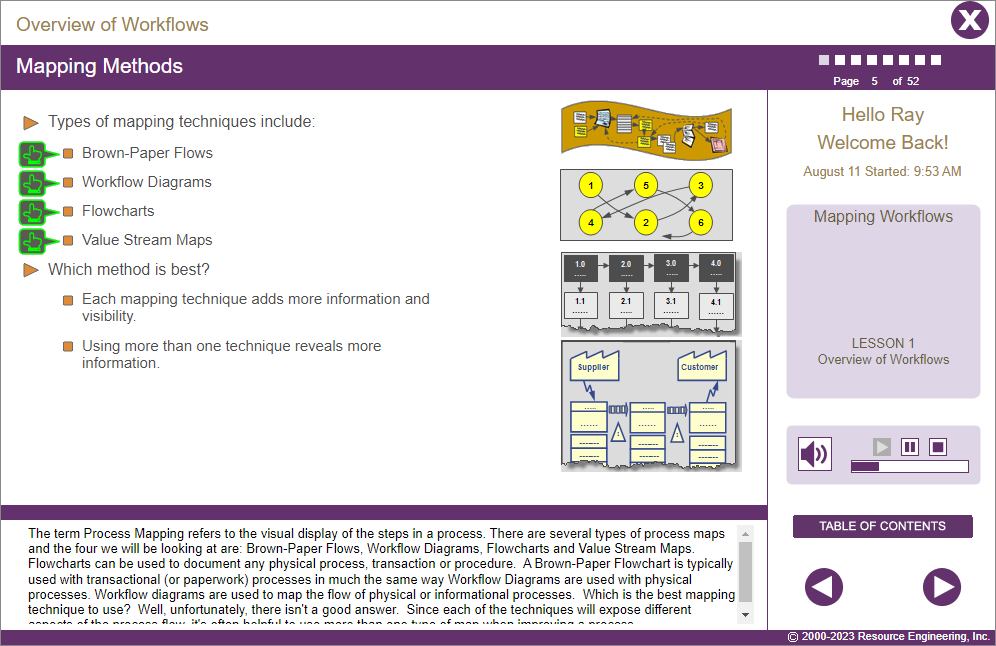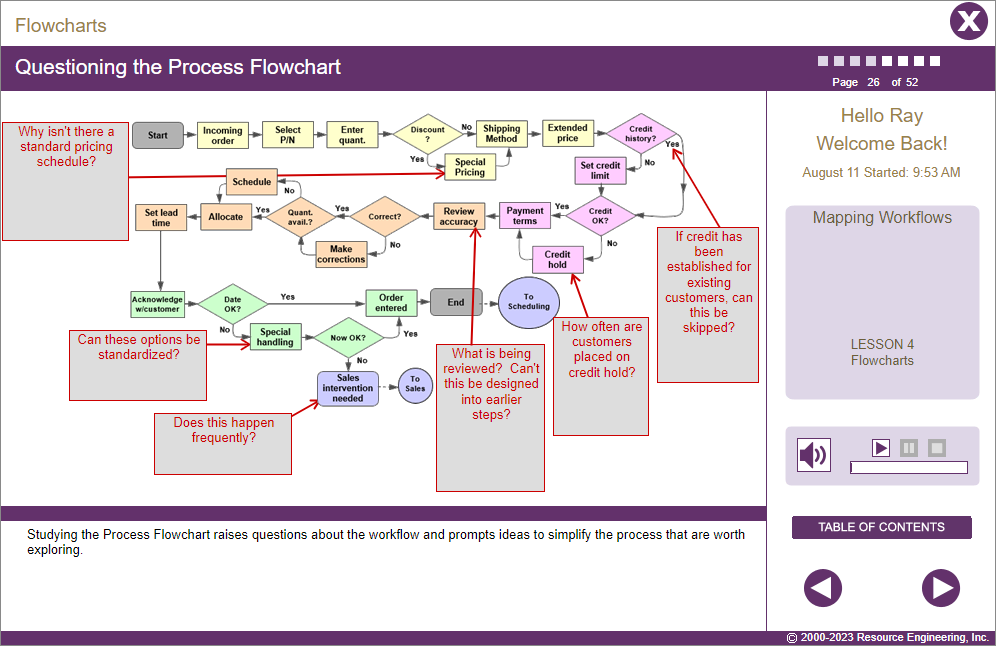Course Information
Mapping Workflows Training
Learners will be able to:
- Describe key workflow mapping techniques and discuss the benefits of each.
- Use mapping techniques to identify workflow disconnects, hand-offs, and rework loops.
- Improve workflows by eliminating disconnects and reducing hand-offs and rework.

About This Course
Why Map Workflows?
Workflows are patterns of tasks or steps in a process that are designed to lead to an output. The intent of mapping a workflow is to improve a process by uncovering “the good, the bad and the ugly” parts of the process. “Good” steps in a process are value-adding activities. Anything that does not add value is “bad.” Process steps that lead to errors, mistakes and defects represent the “ugly.” With the bad and ugly parts of a process uncovered, it is much easier to identify opportunities for improvement. In a manufacturing environment it is fairly easy to see the physical steps in the process; in an office/service environment steps in the process can be more difficult to see because they include non-tangible items such as information, services or transactions. But there are tools to map both types of processes and that is the focus of this training.
Mapping Workflows Online Training
Mapping Workflows helps employees create visual representations of processes that they work in and provides them with tools that help unveil different aspects of their workflow and see the processes they work in from different angles. By using one or more of the mapping tools covered (Brown-Paper Flow, Workflow Diagrams, Flowcharting, Value-Stream Mapping), learners will be able to identify the causes of nagging problems and take action to remedy them.
IMPORTANT
This course is a great way to learn how to map workflows. It is taken from our comprehensive Lean for Business Processes course. If you have already taken the Lean for Business Processes course, you have already seen the content covered in Mapping Office Workflows.
- None.
- English (EN-US)
- Chinese (simplified) (ZH)
- Czech (CS)
- French (FR)
- German (DE)
- Italian (IT)
- Japanese (no audio) (JA)
- Korean (no audio) (KO)
- Polish (PL)
- Portuguese (Brazilian) (PT-BR)
- Romanian RO)
- Russian (RU)
- Spanish (ES)
- Vietnamese (no audio) (VI)
Course Objectives
- Define the bounds of a workflow.
- Use a variety of process (workflow) mapping techniques.
- Identity hand-offs, disconnects, incomplete communication and rework loops as non-value-adding components (or waste.)
- Plan improvements to workflows.
- Consider a move from batch processing to continuous (or one-piece) flow.
Course Outline
Lesson 1 | Overview of Workflows
- Overview on what a workflow map is and how they can help improve processes.
- Discussion on the types of maps and the value of each in the mapping process.
Lesson 2 | Brown Paper Workflows
- Introduction to the Brown-Paper Flow as the place to start with mapping processes.
- Step-by-step instructions on how to construct a brown-paper flow and how to use it to identify problems with a work process.
Lesson 3 | Workflow Diagrams
- How to construct a workflow diagram to understand the physical flow of a process.
- Using a workflow diagram to combine or eliminate steps, move sequential steps closer together, reduce the number of hand-offs and to convert to a continuous process.
Lesson 4 | Flowcharting
- How to use flowcharts to document the details of a process including activities, decision points, wait periods, feedback loops and rework loops.
- Four of the most common families of flowcharts are explored along with the pros and cons of each.
Lesson 5 | Value Stream Mapping
- How to use a value-stream map to evaluate workflows and identify waste in a process.
- Developing both a current state and future state map.
Challenge
- An assessment of the learner’s progress in this course.

4.7 out of 5 stars
Comments from Learners About This Course
- Such an interesting course!
- Informative. Good use of example of Order Entry.
You may also be interested in…
- The 5S’s: Workplace Organization – Comprehensive training in the concepts and application of the 5S’s (Sort, Set in Order, Shine, Standardize and Sustain) and how to apply these techniques on the job.
- Lean for Business Processes – Online training that provides learners with a comprehensive understanding of how Lean Manufacturing works in a transaction-based/non-manufacturing business or job function.
- Value Stream Mapping – Focused training in how to map a value stream from developing a current state map, analyzing the value stream and then creating a future state map.




